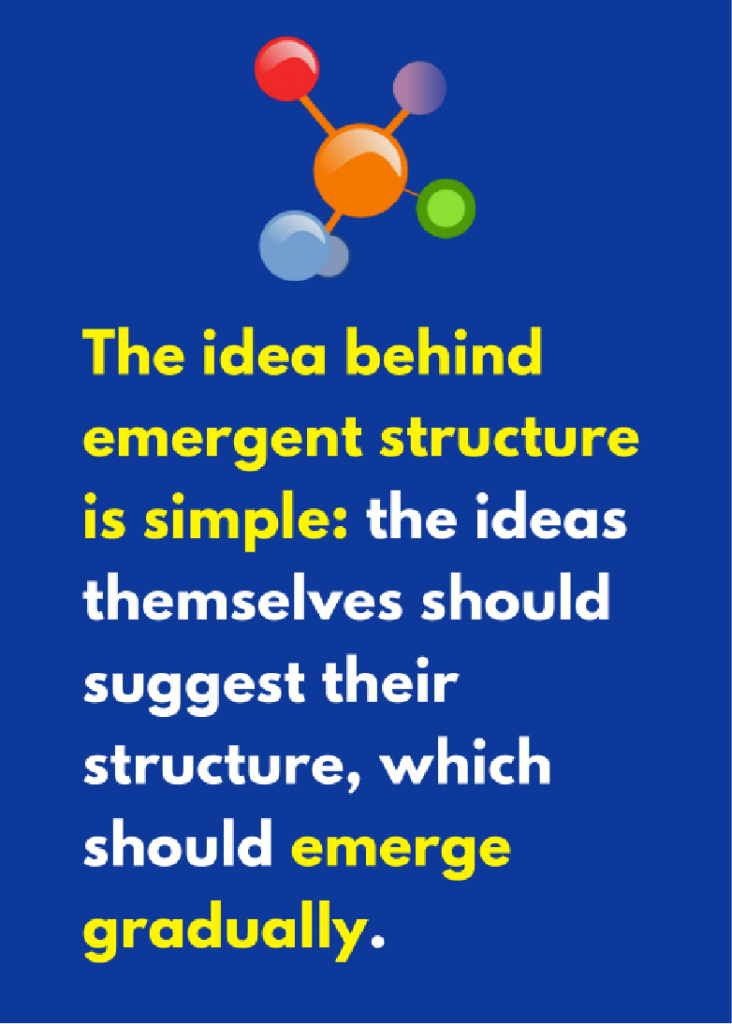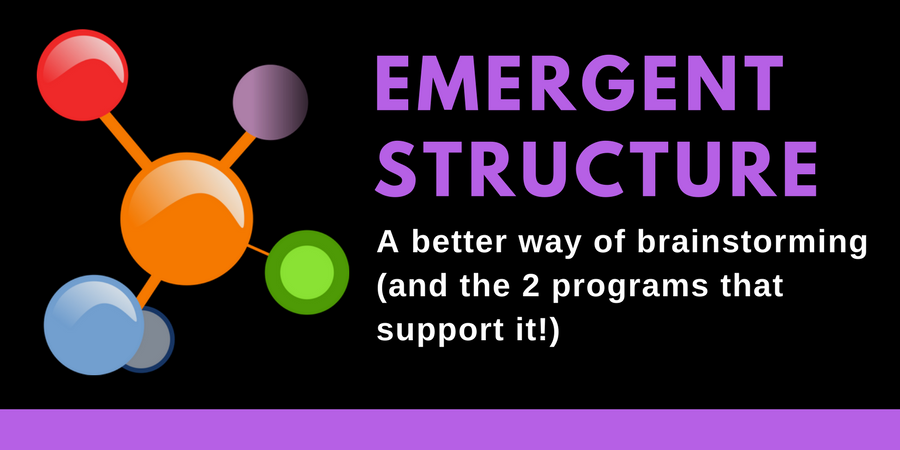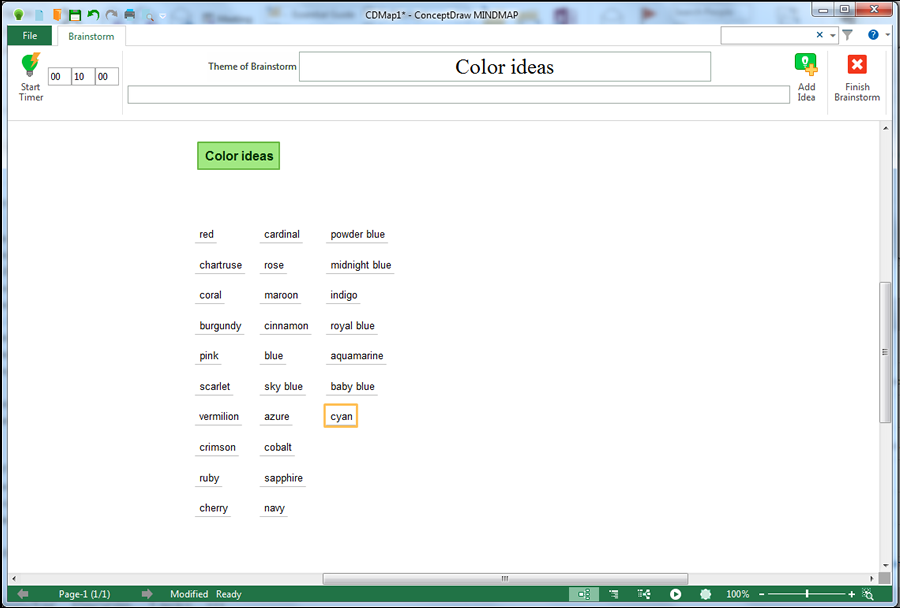If you use mind mapping software to capture ideas from individual or team brainstorming sessions, you need to look for a program that supports emergent structure – one that enables you to hold off on structuring your ideas as long as possible. XMind 8 and ConceptDraw MINDMAP 9 are two programs that support this flexible model of brainstorming.
What is emergent structure?
 The idea behind emergent structure is simple: the ideas themselves should suggest their structure, which should emerge gradually. Forcing ideas into a rigid classification system too early stunts their growth and forces you to view them within a single, narrow context. This limits your ability to improve or build upon them (here’s a previous article on this topic)
The idea behind emergent structure is simple: the ideas themselves should suggest their structure, which should emerge gradually. Forcing ideas into a rigid classification system too early stunts their growth and forces you to view them within a single, narrow context. This limits your ability to improve or build upon them (here’s a previous article on this topic)
Keeping your ideas in a fluid state – in an unstructured “cloud” or list form – during the brainstorming process increases the odds that you’ll see a greater number of opportunities to:
- Group related ideas together,
- Combine smaller ideas into larger ones, and
- Use your craziest ideas as stepping stones to more practical and powerful solutions. If you throw them out prematurely, you may inadvertently delete the precursor of what could become your best solution.
Best practices for brainstorming suggest that ideation and evaluation should not take place at the same time. Why? Because our brains are powerful associative engines. We see a word or a picture, and our brain immediately starts free associating and serving up related ideas. Frequently, those ideas are more valuable than the ones you started with. Naturally, mind mapping aligns very well with your brain’s associative nature. Why place shackles on that ability?
If you’ve ever done a team brainstorming session using a mind mapping program to capture your output, it’s easy to understand what I’m talking about: As members of the team fire off ideas, you must quickly capture them and figure out where they belong within the mind map. This isn’t as easy as it sounds, because some ideas your team mates suggest will be outliers that don’t seem to fit with the others.
How brainstorming mode works in most programs
Most programs that offer a brainstorming mode that is focused on the speed of idea capture – streamlining the process of adding new map topics so it can be done quickly, often using only the keyboard. When it comes to capturing ideas, speed certainly is important. But, as we’ve seen, it’s not the whole story. You need the capability to do a brain dump of ideas, without worrying about where to fit them within into a rigid structure. In other words, the software program should record them as separate objects, floating in a “cloud,” which you can group and regroup to experiment with different arrangements.
Compare this to the standard mind mapping format, where most new topics are immediately assigned to a parent topic – except for a handful of floating topics. Ideally, as we discussed earlier, this “cloud” of ideas can be stumuli for idea improvement and combination.
How XMind 8 supports emergent structure
In XMind 8, the brainstorming mode opens a separate window on the left side of the screen called the “Idea Factory.” It encourages you to capture your ideas in a text form field. To do so, you simply type them, hit the enter key and type your next idea. As you do so, your ideas appear in neat rows below the form field. You can drag and drop them to change their order, but you can’t freely position them on the screen.
In addition, XMIND 8 enables you to create some preliminary groups into which you can capture your ideas. What groups should you create? Use your gut feelings to guide you. Remember: At this point in the brainstorming process, less is more. Just a few broad “buckets” is all you need at this point in the process. If you create too many categories, you risk classifying your ideas too quickly – with all of the disadvantages we’ve already discussed.
When you’re done brainstorming, you can simply create high-level topics and sub-topics in the mind map on the right side of the screen to contain them, and drag and drop your ideas into place – without leaving brainstorming mode.
How ConceptDraw MINDMAP 9 supports emergent structure
ConceptDraw MINDMAP’s brainstorming view fills the screen. It contains form fields at the top center of the screen for the title or theme of your brainstorm. It will become the central topic when you switch to mind map view. Below it is a second form field that says “enter ideas.” When you do so, it places them in a column below and to the right of the main idea. You can quickly type an idea, hit the enter key, type the next idea and so forth – very quick and efficient.
What makes ConceptDraw MINDMAP’s brainstorming view support emergent structure is that the program doesn’t force you to fit your ideas into a hierarchy. They are “floating” topics that you can group and arrange at will. When you’re ready, you can then drag and drop them into a mind map structure.




Leave a Reply